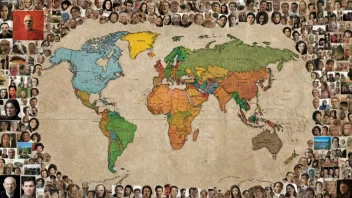Education plays a pivotal role in shaping societies and fostering social cohesion. It influences not only individual growth but also the collective dynamics of communities. This article will compare two distinct approaches to education: traditional education systems and progressive education models. By examining their impact on social cohesion, we can better understand how different educational philosophies contribute to or hinder the development of harmonious societies.
Understanding Traditional Education Systems
Traditional education systems are characterized by structured curricula, standardized testing, and a focus on rote learning. They often emphasize discipline and respect for authority, aiming to prepare students for the workforce and societal roles. Here are some pros and cons of this approach:
- Pros:
- Structured Learning: Provides a clear framework for what students need to learn.
- Discipline and Respect: Instills values of discipline and respect for authority figures.
- Standardization: Facilitates assessment and comparison across different educational institutions.
- Cons:
- Limited Critical Thinking: Often discourages creativity and critical thinking skills.
- One-Size-Fits-All: May not cater to diverse learning styles and needs.
- Social Stratification: Can reinforce existing social inequalities through access to resources.
Exploring Progressive Education Models
Progressive education models, on the other hand, prioritize experiential learning, critical thinking, and social responsibility. They often encourage collaboration, creativity, and the development of problem-solving skills. Let’s explore the advantages and disadvantages of this approach:
- Pros:
- Encourages Critical Thinking: Promotes analytical skills and independent thought.
- Diverse Learning Styles: Adapts to various learning preferences and needs.
- Social Responsibility: Fosters a sense of community and civic engagement among students.
- Cons:
- Lack of Structure: May lead to confusion and inconsistency in learning outcomes.
- Resource Intensive: Often requires more resources and trained educators.
- Assessment Challenges: Difficult to measure success through standardized tests.
Impact on Social Cohesion
Both traditional and progressive education systems have unique impacts on social cohesion. Traditional education tends to create a more uniform society by instilling shared values and norms. However, it can also perpetuate social divides and limit individual expression. In contrast, progressive education fosters diversity and inclusivity, helping to bridge gaps between different social groups. This can lead to a more cohesive society, but it may also face challenges in unifying diverse perspectives.
Case Studies
To illustrate these points, let’s consider two case studies: Finland’s education system, which is often cited as a model of progressive education, and the United States’ traditional education approach.
Finland’s Progressive Education
Finland’s education system emphasizes equal access to quality education, individualized learning, and teacher autonomy. This model has resulted in high levels of student satisfaction and achievement, as well as strong social cohesion. The focus on collaboration and critical thinking prepares students to engage actively in their communities.
United States’ Traditional Education
In contrast, the United States’ traditional education system is often criticized for its reliance on standardized testing and a one-size-fits-all approach. While it aims to provide a basic education for all, it frequently leaves marginalized communities behind. The resulting disparities can lead to social fragmentation and decreased cohesion.
Conclusion
In conclusion, both traditional and progressive education systems have their strengths and weaknesses when it comes to promoting social cohesion. Traditional education provides a structured framework that can unify societies, but it risks reinforcing social inequalities. On the other hand, progressive education fosters inclusivity and critical thinking, which can enhance social cohesion but may face challenges in standardization and resource allocation. Ultimately, a balanced approach that incorporates the strengths of both systems may be the most effective way to promote social cohesion in diverse societies.






